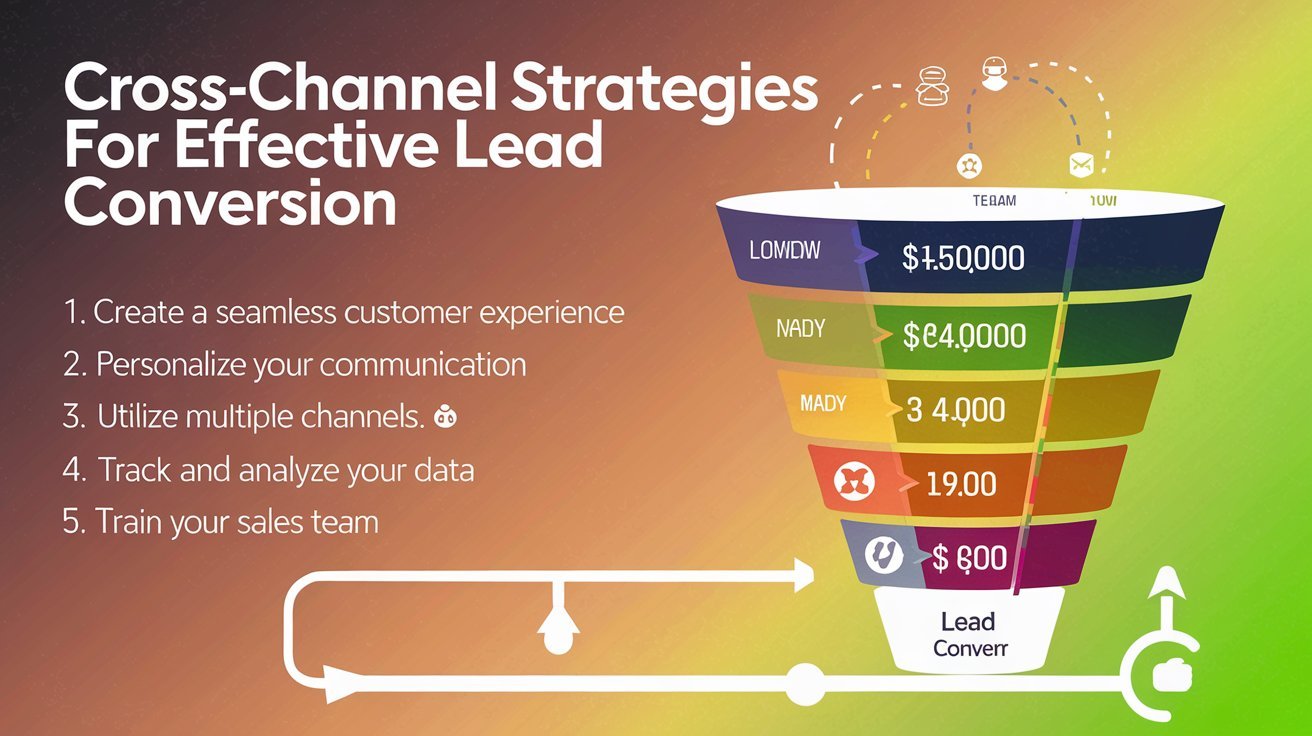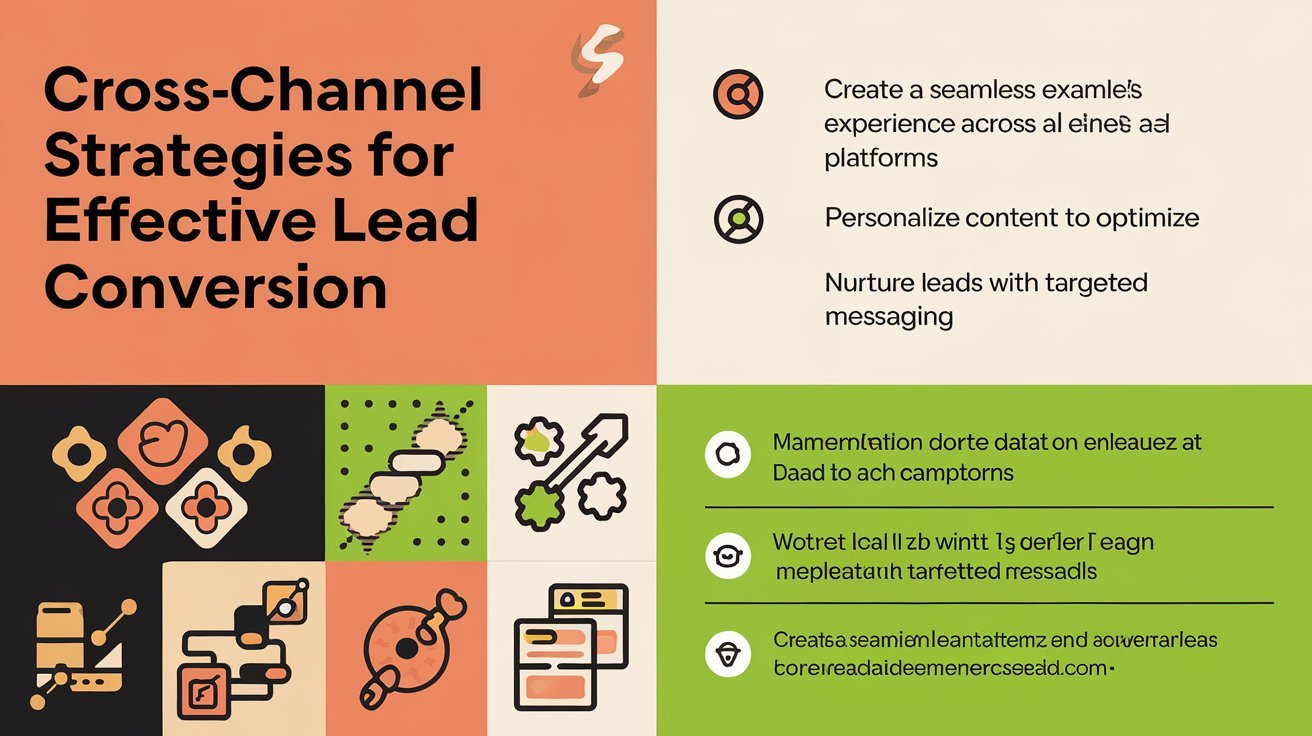Digital marketing landscape, reaching potential customers through a single channel is often not enough. To maximize your lead conversion rates, employing a cross-channel strategy is essential. This approach involves integrating multiple communication channels—such as email, social media, content marketing, and paid ads—to create a cohesive experience that guides leads seamlessly through the buyer’s journey. In this blog, we’ll explore effective cross-channel strategies that can boost your lead conversion efforts and drive better results.
1. Create a Unified Customer Experience
A unified customer experience ensures that your messaging, branding, and interactions are consistent across all channels. This consistency helps build trust and makes it easier for leads to engage with your brand.
Best Practices:
- Develop a Centralized Messaging Framework: Establish core messaging that reflects your brand’s voice and value proposition, and adapt it for each channel while maintaining consistency.
- Ensure Brand Cohesion: Use consistent visual elements, tone, and style across all marketing materials and channels.
- Maintain a Seamless User Experience: Design user interfaces and experiences that are intuitive and aligned with your brand’s aesthetics.
2. Leverage Data for Personalization
Personalization is crucial for engaging leads and guiding them through the conversion funnel. By leveraging data from various channels, you can deliver tailored content and offers that resonate with individual leads.
Best Practices:
- Integrate Data Sources: Use CRM and marketing automation tools to consolidate data from all channels, creating a comprehensive profile of each lead.
- Utilize Behavioral Insights: Analyze lead behavior across channels to understand their interests and preferences, and use this information to personalize your outreach.
- Implement Dynamic Content: Create content that adjusts based on lead data and interactions, ensuring that each lead receives relevant and timely messages.
3. Implement Multi-Touchpoint Campaigns
Multi-touchpoint campaigns involve engaging leads through multiple interactions across different channels. This approach helps nurture leads and keeps your brand top-of-mind throughout the buyer’s journey.
Best Practices:
- Design a Lead Nurturing Workflow: Develop automated workflows that deliver targeted content and follow-ups based on lead interactions and stage in the sales funnel.
- Use Cross-Channel Retargeting: Implement retargeting ads on different platforms to re-engage leads who have interacted with your brand but haven’t yet converted.
- Coordinate Campaign Timing: Align your campaign messages and timing across channels to create a cohesive experience and reinforce key points.

"These cases are perfectly simple and easy to distinguish. In a free hour, when our power of choice is untrammeled and when nothing prevents our being able to do what we like best, every pleasure is to be welcomed and every.!"
Cherry Cruuz
4. Optimize Lead Scoring and Segmentation
Effective lead scoring and segmentation help you prioritize high-potential leads and tailor your follow-up strategies. By integrating data from various channels, you can refine your lead scoring and segmentation processes.
Best Practices:
- Develop a Comprehensive Scoring Model: Use data from all channels to create a lead scoring model that reflects engagement, behavior, and fit with your ideal customer profile.
- Segment Leads Based on Channel Interaction: Group leads according to their interactions across different channels, and tailor your communication strategies to each segment.
- Adjust Scoring Criteria Regularly: Continuously review and adjust your lead scoring criteria based on performance data and evolving lead behaviors.
5. Track and Analyze Cross-Channel Performance
Tracking and analyzing performance across channels is essential for understanding what works and what doesn’t. This insight allows you to refine your strategy and optimize your lead conversion efforts.
Best Practices:
- Use Integrated Analytics Tools: Implement analytics platforms that provide a holistic view of performance across all channels, allowing you to measure and compare effectiveness.
- Monitor Key Metrics: Track metrics such as conversion rates, cost per lead, and engagement levels across different channels.
- Analyze Attribution Data: Understand how different channels contribute to lead conversions and adjust your strategy accordingly to focus on the most effective touchpoints.
6. Foster Cross-Channel Communication
Effective cross-channel communication involves ensuring that your marketing, sales, and customer support teams are aligned and share insights. This collaboration is key to delivering a consistent experience and improving lead conversion rates.
Best Practices:
- Encourage Team Collaboration: Facilitate regular communication between marketing, sales, and customer support teams to share insights and strategies.
- Use Collaborative Tools: Implement tools that enable seamless information sharing and collaboration across teams.
- Align Goals and KPIs: Set shared objectives and key performance indicators to ensure that all teams are working towards common goals.
7. Test and Iterate Your Approach
A successful cross-channel strategy requires continuous testing and optimization. Regularly test different approaches, channels, and messages to determine what drives the best results.
Best Practices:
- Conduct A/B Testing: Experiment with different messages, content formats, and channel combinations to identify what resonates best with your audience.
- Gather Feedback: Collect feedback from leads and customers to understand their experiences and preferences.
- Iterate Based on Insights: Use performance data and feedback to make informed adjustments and improve your strategy over time.

- Create a core message that aligns with your brand’s values and adapt it to fit each channel’s format.
- Maintain uniformity in tone, style, and visual elements according to established brand guidelines.
- Ensure that content created for different channels aligns with your central messaging strategy.
- Platforms like Google Analytics, HubSpot, and others that provide insights into performance across different channels.
- Develop content that adjusts based on lead data, interactions, and stage in the buyer’s journey.

